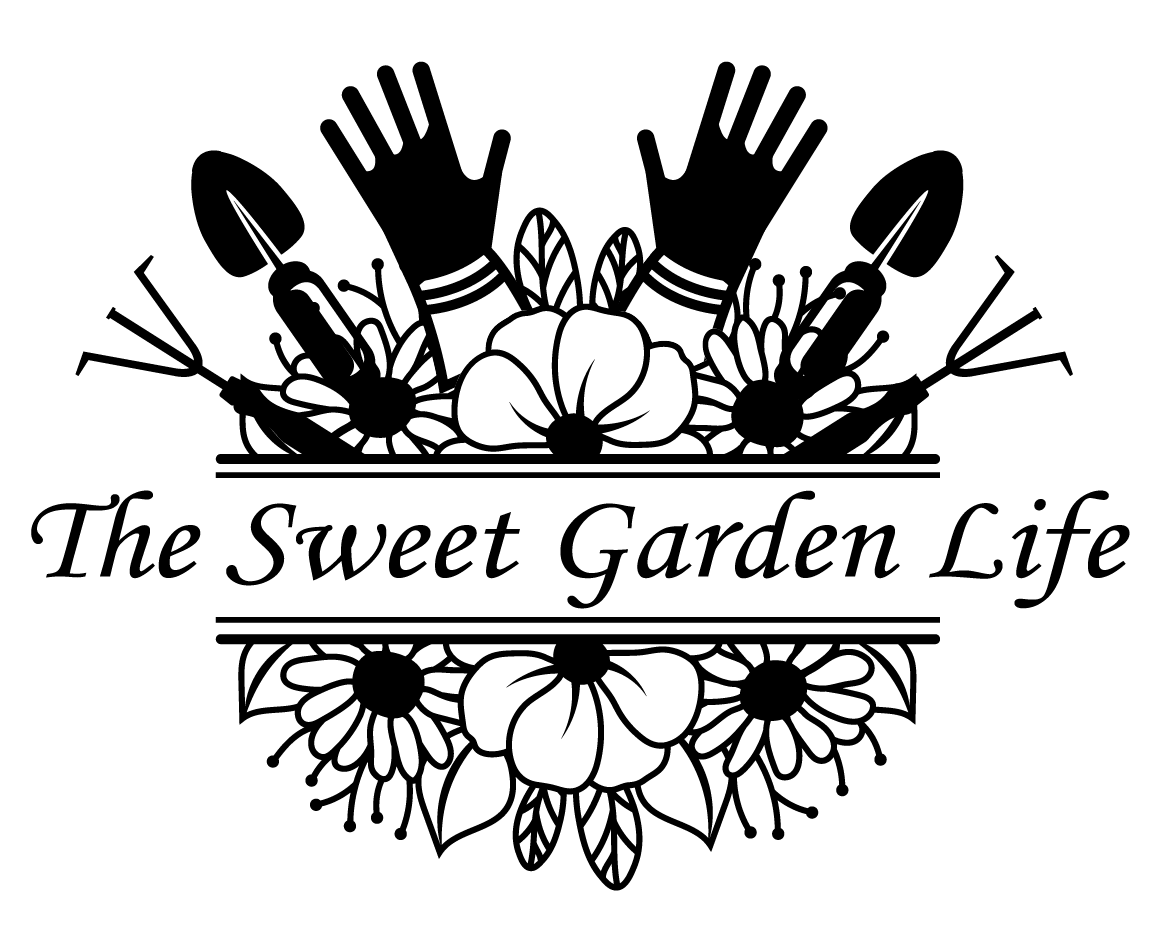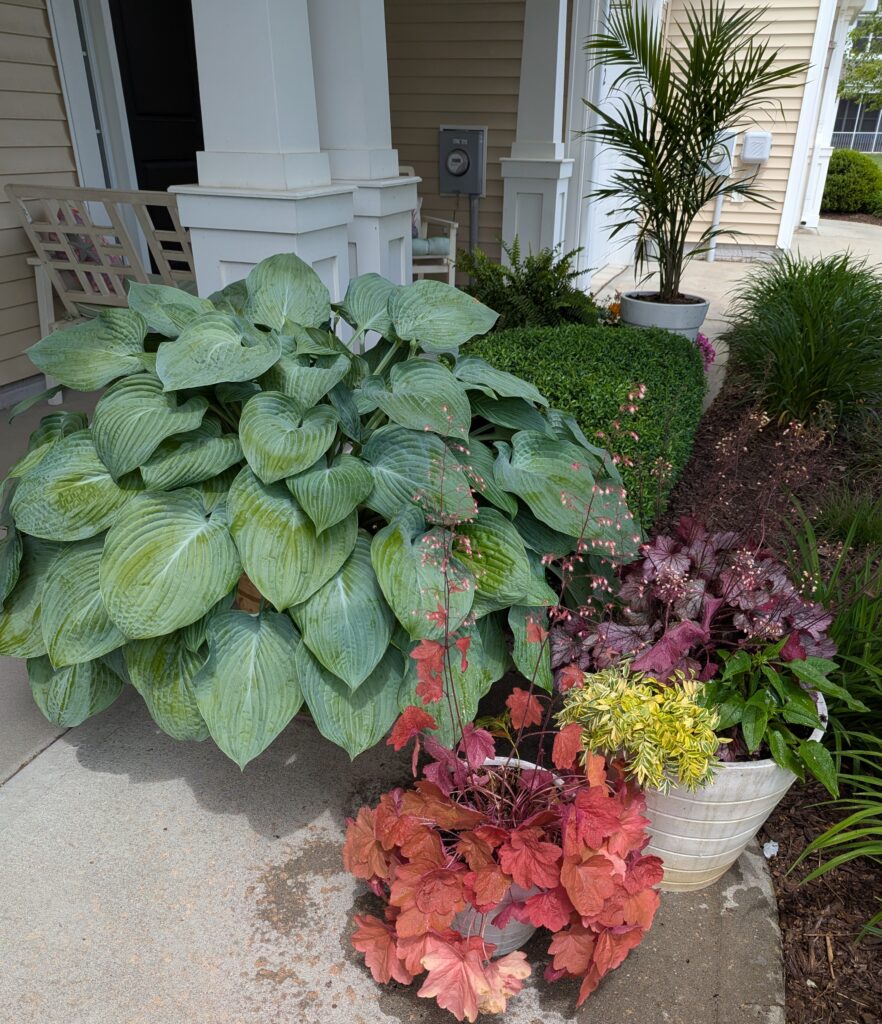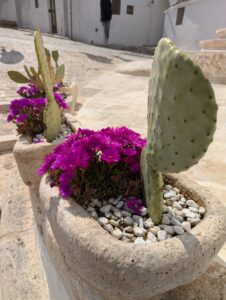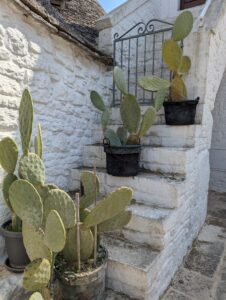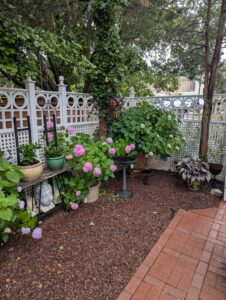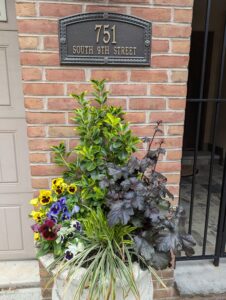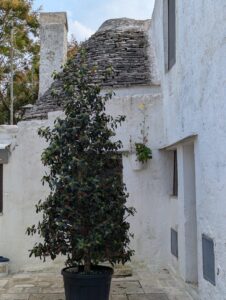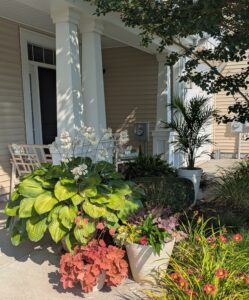Container Gardening Using Perennials for Beginners/Cost Effective
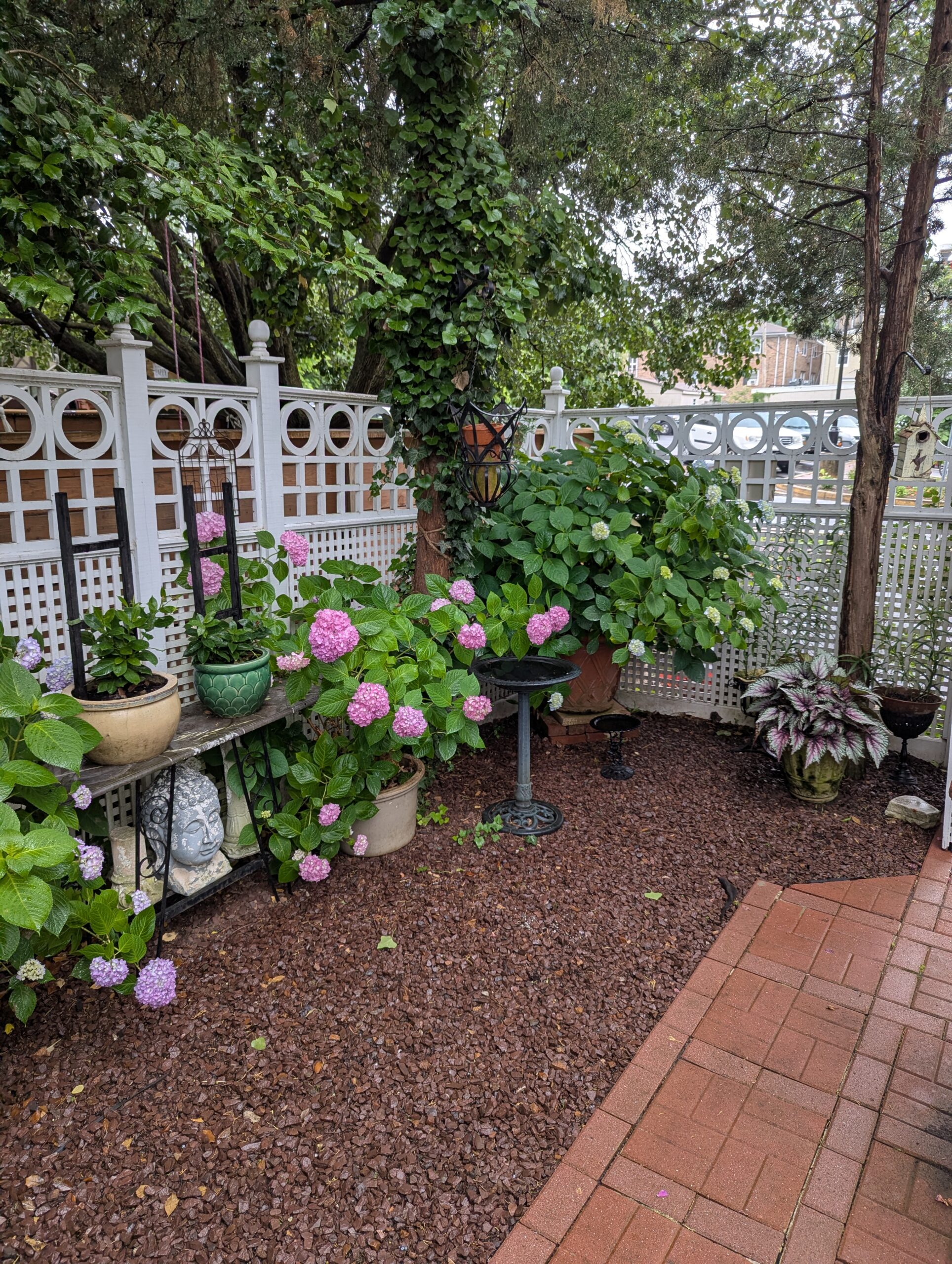
My tiny garden comes to life in the spring, summer, and fall when I plant and arrange glorious annuals in containers and scatter them throughout my yard. I love browsing local garden centers discovering all the new and improved flowers ready for purchase. After a few too many trips to these centers (which is my annual ritual), I realize yet again I have spent hundreds of dollars in one season! Each year I vow to limit the amount of pots I intend to plant but never do. This year as prices continue to rise, I finally decided to significantly cut back on the amount of money I spend on annuals. This year and going forward, I will be transitioning from annuals to perennials in decorative pots which will “over-winter” and bloom from year to year without the yearly exorbitant expense. Read on to learn how to implement container gardening using perennials for beginners.
(Some of the links within this post are affiliate links on which I receive a small compensation from the sale of certain items with no extra cost to you.)
(As an Amazon Associate I earn from qualifying purchases.)
Choose the Correct Container
To increase your perennials’ chances for survival in containers, consider the following.
- Select larger pots because perennials have larger root systems and require deeper and larger containers.
- Succulents have shallow roots, therefore choose a shorter pot. The extra soil surrounding the roots will create more insulation during the winter.
- Choose containers that withstand hot and cold cycles. Terra cotta and clay pots will crack and chip away with drastic temperature shifts. Instead, select wood, composite, metal or resin pots. If using wood, line the container with a plastic insert with drainage holes in both the wooden container and plastic liner to prevent rotting.
- All containers should have drainage holes; at least one every one and one half to two inches apart. Use a drill with a mason or concrete bit for glazed or unglazed pots, or a regular bit or large screwdriver with a hammer for all others. For more information on drainage in containers, click here.
- Use a plant dolly if you select an extra large pot to make moving easier. It will also help when you move the plants around with the changing season and light requirements.
- If reusing a pot, disinfect it with one part bleach to nine parts water before adding soil.
Soil for Containers
Choosing soil can be tricky. Always read the tag on the plant to determine which type of soil each plant needs. Succulents require better draining soil containing perlite and/or sand, whereas orchids (which fare well in a warmer climate) are epiphytes and require a bark type soil.
For most perennials, though, choose a good potting soil or potting mix. These soils are specially formulated for pots. They contain vermiculite, which helps aerate the soil and, when it expands in the heat, helps retain water and conversely helps with proper drainage. Vermiculite also adds needed nutrients that aid in healthy root growth.
Hydrophobic Soil
Extra soil should be tightly sealed in the bag to prevent the soil from drying out and becoming hydrophobic, meaning it fails to mix with water and tends to repel water. If the soil becomes hydrophobic, it indicates that you are not sufficiently watering the plant. When soil becomes hydrophobic water will drain around the edges of the pot and out of the holes rather than be absorbed in the soil and retained in the roots.
Rehydrating Soil
- If your soil becomes hydrophobic, place it in a basin and water it thoroughly, adding more and more water until it is completely drenched but not dripping. Allow it to sit for a while and retest to see if it has completely absorbed the water.
- Or, you can submerge the entire pot with dry soil into a basin of water and allow the soil to absorb the water from the bottom up. This process will take at least an hour or two.
Perennial Selection for Year Round Gardening – Tips
When creating a container garden using perennials, choose plants that will survive 2 zones colder than your actual growing zone. This allows them to survive more drastic cold and warm cycles in outdoor pots.
Select dwarf citrus, fruit trees, and/or bushes in the proper zone.
Choose varying heights and growth habits, including the tall “thriller”, medium sized “filler” and the over hanging “spiller”. For more information on how to arrange flowers in pots, refer to Outdoor Container Ideas.
Plant flowers that have the same water and sunlight requirements together in a pot and place them accordingly in your garden.
Place perennials that spread aggressively in pots to contain them in a neat, tidy spot. Plants such as mint, bamboo, black-eyed Susans, lily of the valley, and some coneflowers have a spreading tendency due to their rhizome and underground root systems.
For more information on which perennial to choose for your container garden, consider selecting native plants. Click here for more information from the National Wildlife Federation.
Over-Wintering
The perennials you choose will need safeguarding over the winter in order to survive.
To “over-winter” means to provide extra protection to plants in containers over the winter. Most plants will survive the winter if you follow the suggestions below for container gardens using perennials.
Tips for Over-Wintering Container Gardens Using Perennials
If you choose plants that are at your growing zone or one zone below, put the pots in an unheated barn or shed. The dormant plants do not need light in order to survive the winter months.
If your plants can withstand the colder temperatures in your area, huddle them together to retain warmth. Also, keep them on the ground to minimize their exposure to wind.
Another option is to place pots in soil leaving the lip of the pot above the soil. Dig them up in the spring.
You can also wrap the pots with a thick layer of burlap or bubble wrap.
Water the perennial pots sufficiently at the end of the season. Periodically water the perennials throughout the winter (3 to 4 times) unless they are out in the elements and receive sufficient water or snow during the cold season.
Watering A Container Garden Using Perennials
Do not rely on rain water to sufficiently water the plants. The foliage acts like an umbrella and prevents water from penetrating the soil.
Containers are surrounded on all sides except for the bottom by constant air flow. Therefore, they will require more watering. Stick your finger in the top inch of the soil. If it is dry, give it a good watering, if it is damp, wait a day or two and retest.
Note which plants like dry or wet soil. Succulents like to dry out completely, whereas ferns enjoy moist soil. DO NOT OVERWATER!
Group pots close together to help retain water.
Add mulch on the soil to also help retain water. The mulch impedes evaporation of water and also helps keep the soil at a constant temperature.
Use a drip-irrigation system. Purchase one through Ferrisland.
Fertilizing Container Gardens
The water and/or soluble fertilizer added to a container will drain more quickly than when added to the ground. Therefore, a lot of the nutrients in the pot will be depleted, or leached, from constant watering. Therefore, perennials in containers will need a bit more fertilizer than plants submerged in the ground.
Use an all-purpose fertilizer for containers. Faster growing plants will need more fertilizing, whereas slow growing plants will need less. Fertilizing can boost flower production.
Water soluble fertilizers will penetrate the roots more quickly. Granular type fertilizers work slower with each watering.
You do not want to over fertilize plants. This will cause root burn and may eventually kill the plant.
Read the tag and use that recommendation as a guide.
A good rule of thumb is to fertilize every couple of weeks for about a month in the beginning of the season. This gives them a nice boost. Don’t forget to deadhead! (pinching off spent flowers)
DO NOT FERTILIZE UNTIL YOU SEE ACTIVE GROWTH IN THE SPRING.
Conclusion – Container Gardens Using Perennials for Beginners
Transitioning from annuals to perennials can be successful if you follow these simple guidelines.
- Select the proper container.
- Choose the appropriate soil for your plants.
- Select plants that are 1 to 2 zones below your ideal growing zone.
- Over-winter where needed.
- Water the plants more frequently and fertilize more frequently if needed.
As you have read, it is possible to cut the cost of planting container gardens by using perennials rather than annuals. Give it a try and see what happens. Yes, the initial cost will be relatively high, but the cost in successive years will diminish significantly.
I hope you enjoyed this post. Please leave a comment below and share it with friends and family.
Happy Gardening!
Nina
bestgardeningforbeginners@gmail.com
www.bestgardeningforbeginners.com
